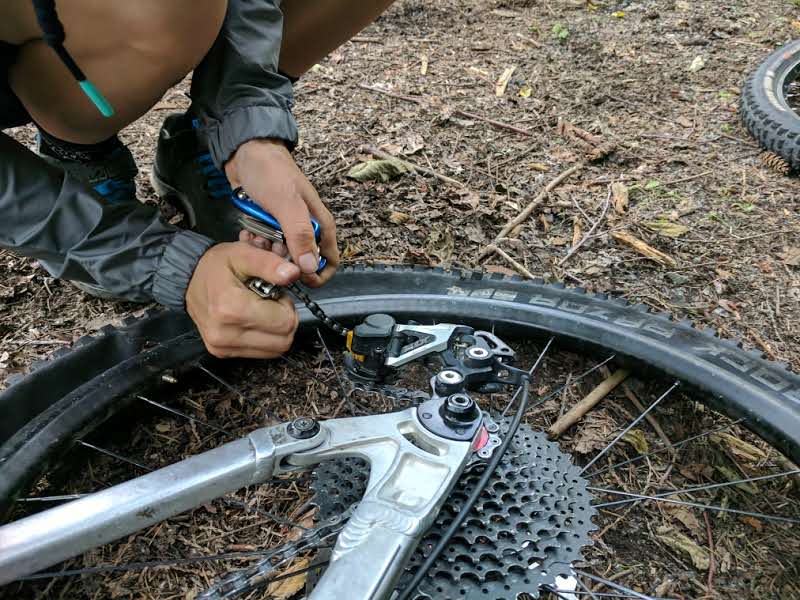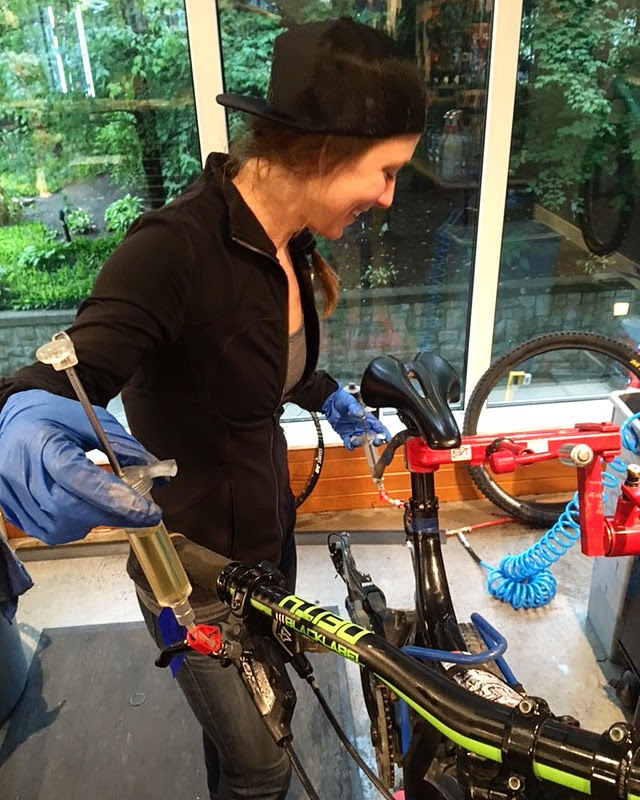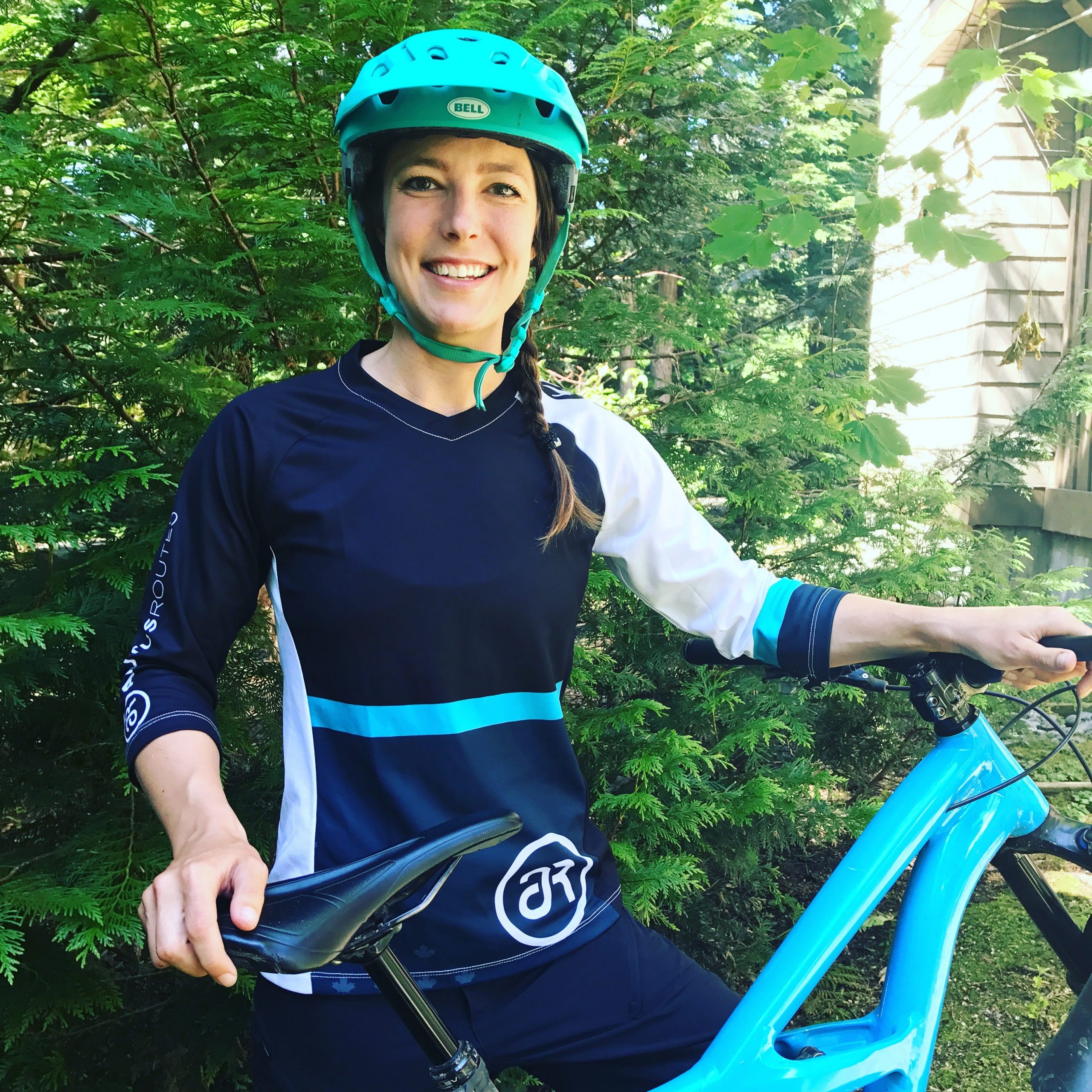Make your Dream come True - The experience of our Bike Guide student
By Dani Huff - WAS Bike Guide Training Program Student

Summer and coincidentally the Bike Guide Program at Whistler Adventure School (WAS) have come to an end. This transition to Autumn here in Whistler has spurred a bit of self-reflection regarding what I’ve accomplished, the people I’ve met, and opportunities I’ve had the chance to be a part of over these past six months. I’m now certified in Wilderness First Responder, PMBI Level 1, Trail Mechanics, Trail Guiding, and was fortunate enough to land a Co-op with Arbutus Routes as a bike guide. Each of these individual experiences were rewarding in and of themselves, but the tying together of the courses by WAS created a successful program which prepared me to immediately step into a guiding role.
The Life as Bike Guide in Whistler
While it’s difficult to summarize, there is one experience with a client that does a fair job at explaining it in whole. The first time I guided a singletrack tour with Arbutus Routes my guest gave me a wake up call to the responsibility I had. As I was talking to him at the beginning of the tour, trying to gather information about him, where he typically rides, and experience biking, he shared information that humbled me. He was from Denmark, loved fast single track, but most importantly, this guided tour was on his bucket list. He had been saving and planning this trip to Whistler for years. He told me, “you don’t understand, it’s been my dream to bike in Whistler. To bike here is something I’ve always wanted to do before my life is over.” Yes, that was my first guiding experience, and I made sure it was the best ride around Lost Lake singletrack I’ve ever done. We sessioned features, he did his first ever rock roll, and we took an immense amount of photos for him to share with his family. I still genuinely smile about this experience because I was able to be the guide for this guy’s bucket list ride, and to be the one that helped create the constant smiles, stoke, and fist bumps was truly special. I had the honor of creating that experience for him, and that is exactly what makes me passionate about guiding. To be able to share the sport I love in such a coveted area of the world is remarkable. I’m grateful to have joined the program at WAS and in turn, join a team of like minded individuals at Arbutus Routes to share our passion of playing in the woods on bikes with people from all over the world.


The Layout of the Bike Guide Program
The program layout was thoughtfully planned to create work-life balance and utilize block programing, so each course built on the prior. Courses are either spread out over a month, allowing time to work or play in the meantime, or it was condensed and knocked out over the course of a week. Either way, this allows the students to create a balance of work, education, and sport. One of the beneficial sides of this for me, as an international student, was the ability to obtain a study and work permit for the program. This allowed me to earn a living while receiving an education at the same time. As mentioned earlier, each course essentially builds on the other, even though they can all stand alone. The first course, which laid the foundation of the program, was Wilderness First Responders.
First Course – Wilderness First Responder
Wilderness First Responder (WFR) was a course I wanted to take for personal knowledge as well as for my career. I not only had a deep desire to gain these skills in order to ensure future clients are in the best possible hands, but I wanted to know wilderness aid protocol for my friends and loved ones when we are out for a ski tour or bike ride.
We had three main objectives for the course: drawing the line on how to rescue, face the reality of what’s happening, and how to be the leader in a rescue. While all of these are subjective because elements, injuries, and location will vary from case to case, learning how to draw the line between life threatening and manageable injuries was a key takeaway. We learned how to provide care in the backcountry to get patients out on our own, but also how to determine when to call in for support and evacuation. The simulations provided by our instructor made us feel as if we were actually dealing with hard decisions, real injuries, and complicated evacuations.
WFR is an essential base requirement to any guiding career. The tools and knowledge gained through this 80 hour experience was crucial to my role as a bike guide, and it provided me with the skills needed for adventuring in the backcountry for my own recreation.


Second Course – PMBI Level 1 Instructor
In addition to WFR, the other main criteria guiding companies look for is PMBI Level 1. Knowing this, WAS incorporated both into our Bike Guide Program course curriculum. I was looking forward to the PMBI portion of the program so I could put language to what I’m doing on the bike, fine tune my own skills, and coach others appropriately. Doing and teaching are very different skills, and I love walking away from this course with the capacity to now assess clients and coach them through progression on their bikes.
PMBI was a three day course that incorporated a lot of riding, learning, and then practice teaching. The primary focus was practice teaching, which was a great way for our instructor to assess our coaching skills and expedited the learning process through repetition. For level one, we focused on the six basic skills of mountain biking: position and balance, operation of controls, terrain awareness, direction control, pressure control, and timing and coordination. A big part of learning how to coach all these skills was how to do it as safe as possible. Mountain biking is a high risk sport, but we learned how to mitigate factors to facilitate the safest learning environment. I can confidently say, all the aspects we learned in Level 1 set me up for success when I started my Co-op program with Arbutus Routes as a bike guide. The next course in the program went above and beyond to equip us for guiding, Trail Mechanics.
Third Course – Trail Mechanics
Trail mechanics surprisingly became one of my favorite aspects of the entire program. Mainly because this is where I was the least experienced and therefore saw the most growth. This is different to the regular mechanics course offered at WAS, as this one focuses on how to assess and fix bikes trailside and tailored to guiding. The key difference from Trail Mechanics to a regular course is the environment in which you are fixing the bike: in the woods, mosquitoes buzzing, and limited resources. Unfortunately, you can’t carry an entire workshop while riding, so the key is to be resourceful and prepared. Without giving you an entire laundry list of what we learned how to repair, some of the items included are shifter cables, derailleur hangers and adjustments, headsets, spokes, and dropper posts. We spent ample time in the shop learning how to assess and fix these issues, but we always took it to the trail to make sure we could do the same quality of work outside the pristine shop. When you are guiding a group, you are responsible for the group’s experience on many different levels, one of which is taking the lead when a mechanical occurs. This was the final course to prepare us for our guiding course, where we put it all together to ensure we were ready to step into a co-op experience.


Final Course – Guiding Clients
This final course consisted of two 8 hour days on the bike learning how to put everything together as a guide, and a final exam guiding our instructors through Whistler singletrack. The first day of the course was spent on 40k of Whistler trails, showing us how to progress clients from beginner to intermediate trails based off their skill set. One of the most important aspects of being a successful guide is being able to properly assess the capabilities of your client and take them on trails appropriate for them. Taking clients on trails suited to their level means potential crashes are reduced and the stoke level stays high. On the second day of our course, we did the same in Squamish but focused on how to assess and progress advanced riders. We learned a lot during these two long days on trail, but we also had an incredible time riding everything from flow to advanced technical trails.
Even though our classroom actually felt like a playground, we had to show our retention and apply everything we learned for our final exam. For this, the other students and I took turns guiding our instructor through a full day tour of Whistler. Our skill assessment included bike safety, rider assessment, route finding, safety while guiding, nutrition, and group management. All of the diligent studying, practical application, and course instruction came together seamlessly. I know this success speaks volumes to the course content, program layout, and instructors we had. This final course showed my competence and preparedness to take on the next step: guiding guests for Arbutus Routes in Whistler, BC.
Co-Op with Arbutus Routs
I was fortunate enough to start a role as a Bike Guide straight away with a company called Arbutus Routes (AR) in Whistler, BC. AR is known as a trail hub for Whistler, locally owned and operated, and has cultivated a sense of ownership and pride amongst it’s guides, mechanics, and sales associates. I not only had the privilege of guiding for AR, but I was able to gain more experience and knowledge in bike maintenance, taught by some of the most talented individuals in the industry. This is a passion I didn’t realize I had (at all). The WAS program coupled with the knowledge sharing and support of AR, I was able to tap into an aspect of biking I hadn’t found interest in before. This combined experience cultivated new goals for myself, personally and professionally. This was truly a surprise bonus to a course I joined with the sole intention of becoming a certified guide. My guiding experience also surpassed my expectations.


Photo and text credit: Dani Huff – Bike Guide Training Program Student at Whistler Adventure School

